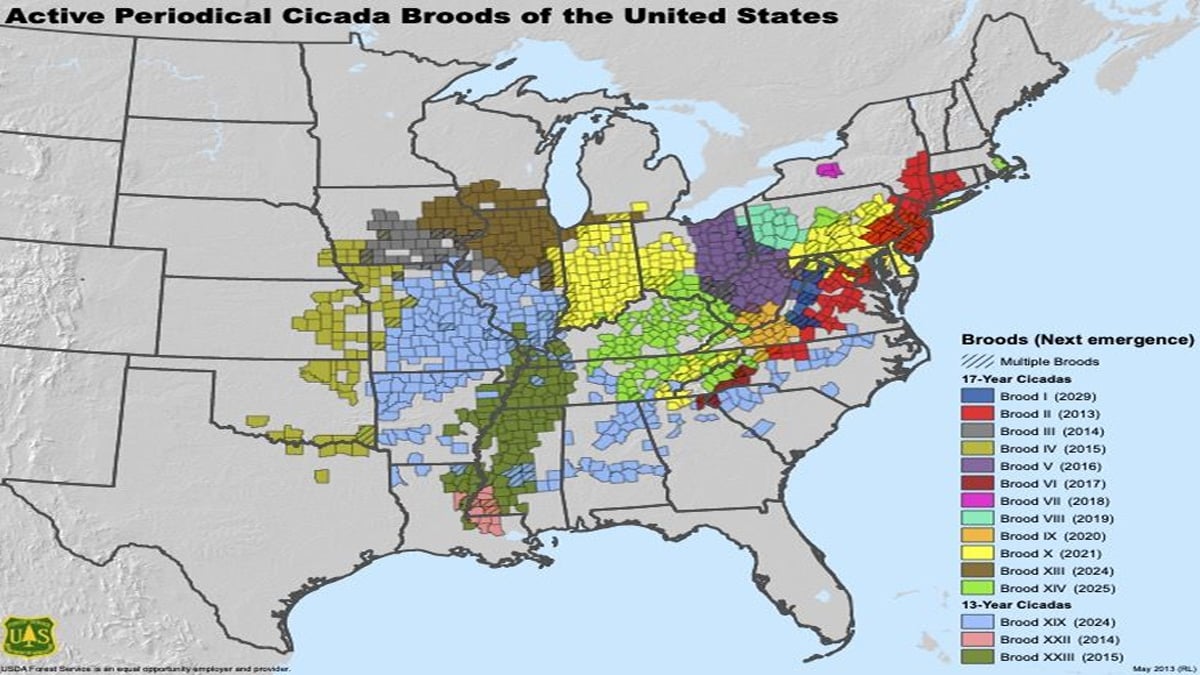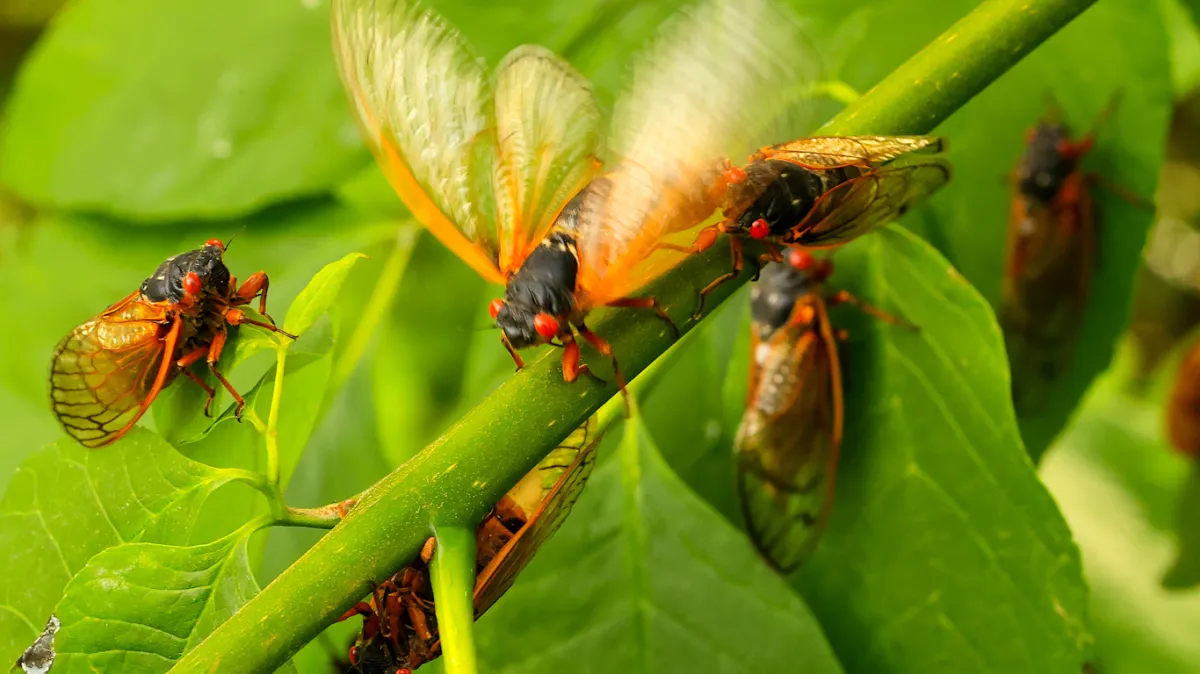If you had “insect swarm” on your list of why 2024 is going to be a rough year, congratulations! For those outside the know, the Summer months in the U.S. are about to get loud. A historic “double-brood” event is well underway, and it won’t end until every last male cicada sings.
Its been well over 200 years since the last time this many cicadas emerged from their underground haven. Despite the horror movie premise, the wee-beasties are a boon to local ecosystems, and can even provide an excellent source of protein and minerals – for those brave enough to munch past those beady red eyes.
The Cicada apocalypse is coming to a state near you in 2024

Periodical Cicadas are a regular – if unfortunate and skin crawling– part of North American life. The insects, which measure about an inch long, spend 13-17 years underground working their way through 5 juvenile stages before clawing their way to the surface.
Like Satan’s red-eyed hellspawn, they emerge in brood groups like clockwork to shed their skins (which make for some tasty bird snacks) and head for the trees. While one brood of cicadas is enough to make your skin crawl, this year serves up a once in lifetime “treat.” 2 broods will be releasing at the same time, The 17-year Brood XIII in the Midwest and the 13-year Brood XIX in the Southeast.
Millions of beautiful and imagination-capturing creatures have gone extinct under humanity’s reign, so why haven’t these bugs followed them straight to Hell? Because that is where they came from, birthed straight from the devil’s imagination.
Once soil temperatures reach around 64 degrees Fahrenheit 7-8 inches underground, the nymphs (a cicada’s final juvenile stage) spring forth like a waking nightmare to molt and scatter their empty shells around like crunchy ghosts.
Some estimates say that as many as 1.5 million cicadas could emerge per acre, to shriek and fornicate to their heart’s content. That is, until they die in droves after their years-long mission to repopulate is finally complete. Though the cicadas are truly nightmarish, in sound and appearance, the massive bugs aren’t dangerous – though they are incredibly rude.
With just 4-weeks to find a mate and reproduce, they don’t have a ton of time for manners, as one hapless TikToker found out. Make sure you have some hair covers, hats, or face shields, as the swarms of bugs can get tangled up in longer hairstyles, and smash with reckless abandon into anything that stands in their way. With millions per acre, some areas will be absolutely packed with swarms of chirping singles ready to mingle all around you.
There is good news, however. Cicadas don’t sting, bite, or carry diseases. The only potential problem homeowners will deal with is the potential eggs the females will lay in young trees, potentially damaging them. Cicadas don’t even eat during their brief topside excursion, though they do get thirsty. For the openminded, they make for a high-protein snack. It’s said they taste like asparagus.
Luckily, Cicadas will only be a passing internet terror for most of the world. But for those in the following states, life is about to get loud – especially for folks in Springfield, Illinois, which is expected to have the highest number of convergences.
- Alabama
- Arkansas
- Illinois
- Iowa
- Mississippi
- Missouri
- North Carolina
- Tennessee
- Virginia
- West Virginia
- Wisconsin
The party doesn’t stop there. The following states have regions that can expect cicadas, but much of the state will be unaffected.
- Colorado
- Georgia
- Maryland
- New York
- Louisiana
- Texas
On the bright side, once the cicadas start their romantic preamble, they only have 4 weeks before they drop like flies.











Published: May 28, 2024 03:00 pm